
25 minute read
Headlights
Facing the Future
Your day-to-day business model is based on an expectation of stability: you know what to expect and what is likely to happen. You also know you’ll deal with the unexpected from time to time, using your experience to handle these curveballs. That’s just business. Unfortunately, sometimes it’s not enough.
The cover article of this issue of Bulldog Magazine details how critical it is for trucking businesses to be prepared for the variety of natural and other disasters which can be a part of our lives. There are more types of disasters and situations which have to be planned for than ever before and each requires its own unique planning. This is an inescapable responsibility, one that could decide whether a business survives and prospers after a disaster.
Your business faces other challenges on a daily basis: mechanical issues; productivity; safety; costs; training and keeping good employees; plus rapid technology and regulatory change, to name just a few.
Fortunately, Mack Trucks is here to support you. After 119 years of operation, Mack has weathered more than a few storms of its own and has the institutional knowledge and resources to help your business be as resilient as possible. Our products reflect Mack’s deep understanding of the truck business and how our customers use their trucks, and what their needs and requirements are. Our trucks are durable, reliable, very productive and efficient, with the best total cost of ownership. They are backed up by an unrivaled network of dealers and support staff, all of whom have access to Mack’s industry leading Uptime network.
One of Mack’s aims is to reduce unplanned downtime to the absolute minimum and to manage it as effectively as possible when it does happen. Years of planning, investment and training have resulted in our Mack Connect uptime and productivity solution. Mack Connect brings together an array of services and resources in a structured way to ensure your trucks are on the road and making money. This includes support services, such as Over the Air software and parameter updates, Certified Uptime Dealers and the GuardDog® Connect telematics platform connected to Mack’s OneCall™ 24/7 support and roadside assistance. Other aspects of Mack Connect utilize the data available to GuardDog Connect to bring powerful business management applications to your fingertips, to optimize utilization, drive fuel economy and productivity, and enhance safety.
Mack is also preparing for other potential challenges to your business, including vehicle electrification, as demonstrated by our development of electric refuse vehicles (see article on page 2), and our efforts to attract new pools of qualified drivers and technicians.
We don’t know what the future will hold, but we can assume that it will always demand our best effort. I know that Mack will be there for our customers with the best service and support to see them through what may come. Mack is Born Ready.
Mack Trucks to build fully electric Mack® LR refuse model
Mack Trucks will build a fully electric Mack® LR refuse truck for Arizona-based Republic Services to help the fleet — which currently operates in 40 states — achieve zero emissions goals. “Given we operate one of the largest vocational fleets in the U.S., we are continuously evaluating innovative approaches and technologies to improve the performance, economics and environmental impact of our fleet,” says Don Slager, president and CEO of Republic Services.
Mack thinks that a fully electric vehicle will work best in a closed loop application in which the truck returns home every night — such as in the refuse industry.
“We are excited to be working with Mack in the development of an electric garbage truck as it would represent a significant step towards a cleaner, safer and more efficient fleet while helping to preserve our Blue Planet for future generations,” Slager says.
Fully electric trucks feature zero carbon emissions, reduced noise and environmental sustainability, and for refuse hauling companies, the ability to operate quietly during early morning hours is an attractive feature.
“Mack looks forward to partnering with Republic Services to test the benefits a fully electric LR can offer in its day-today operations,” says Jonathan Randall, Mack Trucks senior vice president of North American sales and marketing. “As a leader in refuse and alternative solutions, Mack is uniquely positioned to offer a proprietary, integrated and fully electric solution for North America.”
Mack announced in early 2018 that the New York City Depart ment of Sanitation, one of Mack’s largest customers, also will test a fully electric Mack LR model, which will be operational in 2019. Those specs and details will also be announced at a later date.
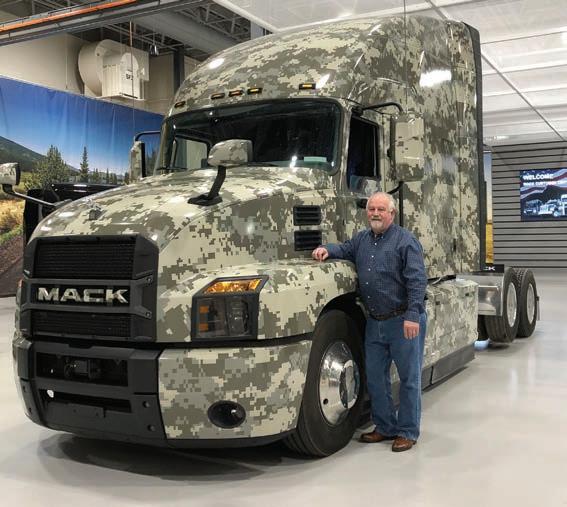
Barry Pottle, CEO of Pottle Transportation and chairman of the American Trucking Associations, recently visited Allentown with his team to get a first-hand look at what it means to be #BuiltLikeAMack. He also viewed the Mack Anthem, donated to ATA by Mack to assist recruiting veterans to the trucking industry.
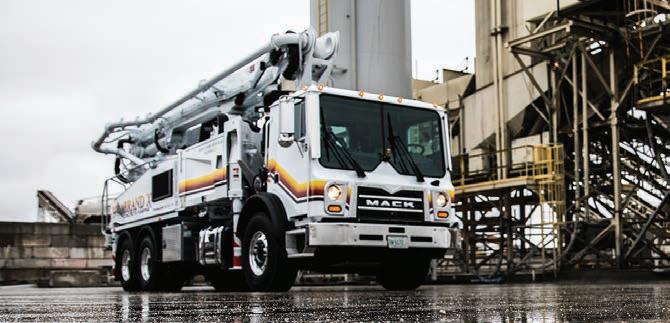
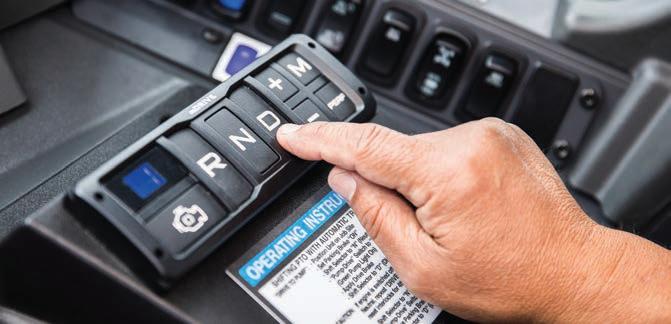
Mack introduces automated manual transmission for cabover concrete pumpers
For the first time in the industry, an automated manual transmission is available in a cabover concrete pumper vehicle. Mack Trucks is offering the mDRIVE™ HD AMT in Mack TerraPro® concrete pumper models. The fully integrated 13- and 14-speed AMTs feature improved performance, proven durability and maximized uptime.
“The mDRIVE HD is the only AMT available with split-shaft PTO functionality, which enables us to offer concrete pumper customers all the benefits of the mDRIVE HD and our fully integrated powertrain,” says John Walsh, vice president of marketing for Mack Trucks. “In addition to improved performance and productivity, the mDRIVE HD helps increase jobsite safety. Eliminating traditional shifting allows drivers to focus on safely operating their equipment.”
In TerraPro® concrete pumpers, the mDRIVE HD will be combined with the 11-liter Mack MP®7 engine, and will be available with higher horsepower and torque ratings than equivalent models with conventional automatic transmissions. The AMT offers customers simplified maintenance, with service intervals of up to 500,000 miles.
“For more than 100 years, Mack has held firm to the belief that components designed to work together simply work better,” says Tim Wrinkle, Mack construction product manager. “Not only do our integrated components deliver higher performance, they also help maximize uptime for our customers.”
The HD model builds upon the design of the mDRIVE, which has been standard in Mack highway models since 2014. With ruggedized internal components, including stronger gears and synchros, the mDRIVE™HD is built to withstand the frequent shifting that occurs during construction applications.
Kriete Truck Center of Milwaukee, Wisconsin, is Mack Trucks’ 2018 North American Dealer of the Year. Mack made the announcement during its annual dealer meeting in January. Kriete finished the year 17 percent above its sales plan and 29 percent above its leasing plan. David Kriete, a third-generation dealer, accepted the award on behalf of the entire Kriete Group. Founded in 1951 with a single dealership, the Kriete Group today operates eight locations across Wisconsin. “Kriete Truck Center exemplifies the values that Mack Trucks is built on, in particular hard work and integrity, and we’re proud to recognize their tremendous support of the Mack brand,” says Jonathan Randall, Mack Trucks senior vice president, North American sales and marketing.
Mack Trucks also named 2018 winners for its regional sales divisions: • Northeast: Ballard Truck Center, Worcester, Massachusetts • Southeast: TranSource Inc., Greensboro, North Carolina • Central: Kriete Truck Center, Milwaukee, Wisconsin • Southwest: Vanguard Truck Center, Houston, Texas • West: Vanguard Truck Center, Phoenix, Arizona • Canada: Mack Ste.-Foy Inc., Quebec City, Quebec
Tri-State Truck Centers was also named U.S. Mack Financial Services Dealer of the Year, while Vision Truck Group was named Canada Mack Financial Services Dealer of the Year. The Mack Leasing North America Dealer of the Year Award went to Tri-State Leasing. Bruckner Truck Sales of Dallas, Texas received the North America Remarketing Dealer of the Year Award, and the overall Customer Satisfaction Award went to Bergey’s Truck Centers in Pennsauken, New Jersey.
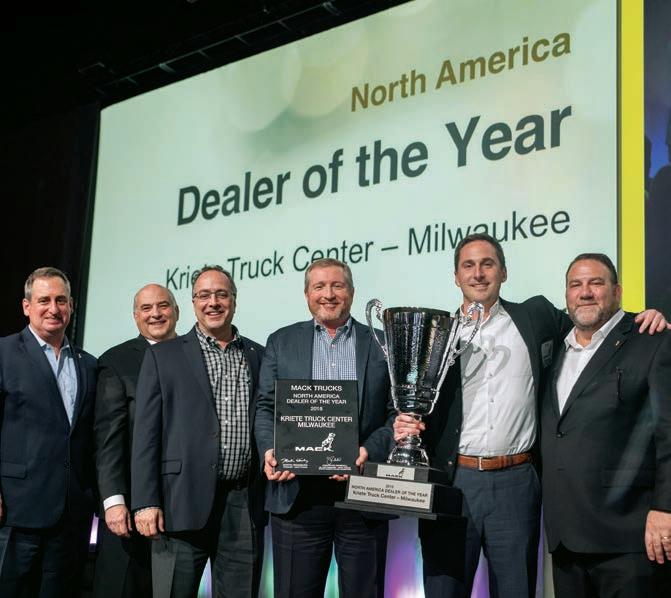
Plan today to survive tomorrow

No trucking business is immune from disaster. Your ability to remain in business following the unexpected depends on how well you prepared.
By Denise L. Rondini
B.J. Shirah, owner of Tri-County Tree Service in Wellborn, Florida, knows firsthand the devastating aftermath of a disaster. He’s worked on the recovery of some of the worst recent natural disasters in the southeast U.S. such as the tornadoes in Tuscaloosa, Alabama, and Joplin, Missouri, as well as hurricanes Andrew, Maria and Michael. While he’s been on the business end of providing disaster services, he’s also seen how many companies are unprepared for emergencies.
“You see trucks out of fuel, broken down with ruined tires, busted hoses and stranded drivers. I’ve seen everything out there and my disaster prep can be helpful to most companies who operate heavy equipment.” He has spent years fine tuning processes his company needs in the event of a disaster. It’s essential, he says, to keep on hand a generator, extra fuel tanks, tires, hoses and water. He reviews communication processes in the event of downed cell towers and trains a team of employees to be ready to take on their emergency roles.
His tree removal business morphs into highway debris removal, but the basic concepts of being prepared, trained and stocked up on supplies can apply to any transportation company.
There’s more to be prepared for. While businesses likely consider hurricanes, tornadoes, floods, fires and IT meltdowns in disaster preparation plans, businesses today must also plan for data security breaches, terrorism and active shooter in the workplace scenarios.
Trucking companies are particularly vulnerable to weather disasters that shut down equipment, catastrophic accidents and infrastructure disasters.
According to the Federal Emergency Management Agency, 40-60 percent of small businesses never reopen their doors following a disaster.
For your trucking business to survive a disaster, whether caused by nature or man, you need a plan for personnel response and a reserve of financial resources to keep the business operational for as long as it takes to get back to business as usual.
Linda Luan, global business resilience program manager at Red Hat, a leading provider of open source enterprise IT solutions, says, “In today’s fast-paced global economy, businesses can’t afford a disaster interruption and need to plan to remain available (or resilient) to continue serving their customers.”
She explains that what once was called disaster recovery planning was renamed business continuity planning in the 1990s, and more recently the name has switched to business resilience.
Trucking businesses need to plan for how they will operate if a disaster strikes. While Luan says no business is risk free, there are threats today that she never dreamed of 20, 10 or even five years ago.
Also, there’s an expectation from customers that you are prepared for anything. “Your customers expect you to have plans and processes in place to avoid interruptions so they can be assured that their own business will not be affected by your disaster,” she says.
Geary Sikich, principal of Logical Management Systems, a business management-consulting firm, defines business continuity as “all initiatives taken to assure the survival, growth and resilience of the enterprise.”
“There is a misperception that there are best practices that work in every disaster situation. Considering that no two trucking businesses are exactly alike, best practices should be looked at as idea hatchers to help you adapt a plan to your unique circumstances.”
During the planning process you should ask several key questions about how resources will be managed including, what skills will be needed, who will have the authority to make crucial decision and how information will be shared.
He adds that there are three levels of planning: tactical, operational and strategic.
“There is the tactical of ‘How do I respond to this particular event that is affecting me right now?’ There is the operational, which says, ‘I have a problem at a location or within a business unit, and how do I respond to help them while at the same time managing things to keep it from cascading outward and affecting others?’ And then you have a strategic level which says, ‘I have a problem and now I should talk to the outside world, customers, stake holders, suppliers etc., to assuage them so they are not overly concerned and so that we can get them on board.’”
Defining the plan
Luan provided this quick reference of what to include in the business resilience plan. • Who: Start with identifying the recovery teams, leaders and authors. • What: Work with the team to define what happens during unavailability of building(s), people, applications and regional disasters. Define work-around procedures or recovery scripts. • Where: Consider alternatives if your location is rendered inoperable. • How: Document key dependencies (e.g. applications, personnel, vital records, equipment, etc.) needed to operate during recovery. Capture and record contact information for all employees. The communication function is critical. Assemble a list of local agencies including fire, police and utilities so you have contact information before you need it.
Who needs to be involved in the planning?
Luan has found it to be crucial for top management to fully buy into the plan. “Like our industry’s acknowledgement by its name change from disaster planning to business
Linda Luan, global business resilience program manager at Red Hat
continuity to business resilience, it refl ects the need for the business to determine its own risk appetite and then provide the resources — people and money — to invest appropriately in the program,” Luan says.
Assess your risks
While some risks are universal — cyberattacks/data breaches, terrorism, active shooter — others are area specifi c — tornado, hurricane, earthquake and fi re. Each business must determine which risks they are most likely to face. An all-hazard threat assessment looks at all threats both natural and manmade. “All must be considered, measured, analyzed and then monitored,” Luan says. If this is your fi rst time planning, research the top business continuation threats to compare your business and industry to ones that are similar. Then consider your business operations in key areas for geographical and geo-political threats, Luan advises.
Assemble leaders
Once you know which risks your company is more likely to face, you need to select the team of people that will lead the efforts once a disaster occurs — the incident management team. “When defi ning the recovery organization, it’s important to follow the organizational structure,” Luan says. “It’s important not to defi ne something new or unusual and expect people to use that when they are under duress.”
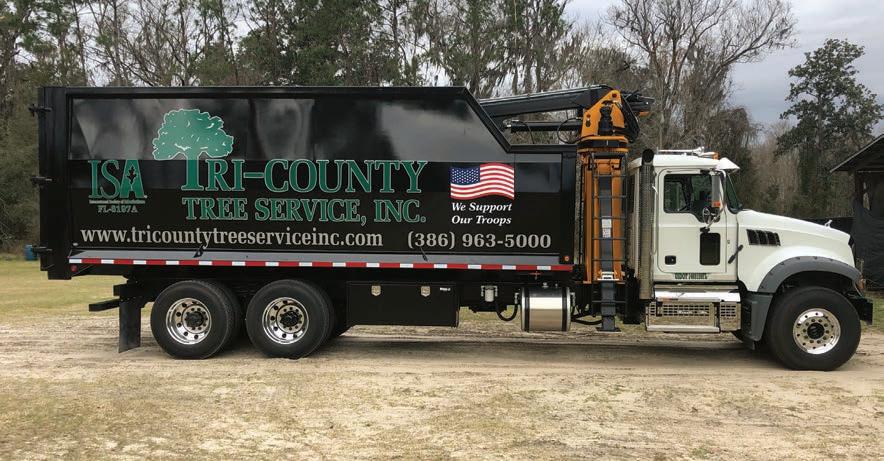
Digging out
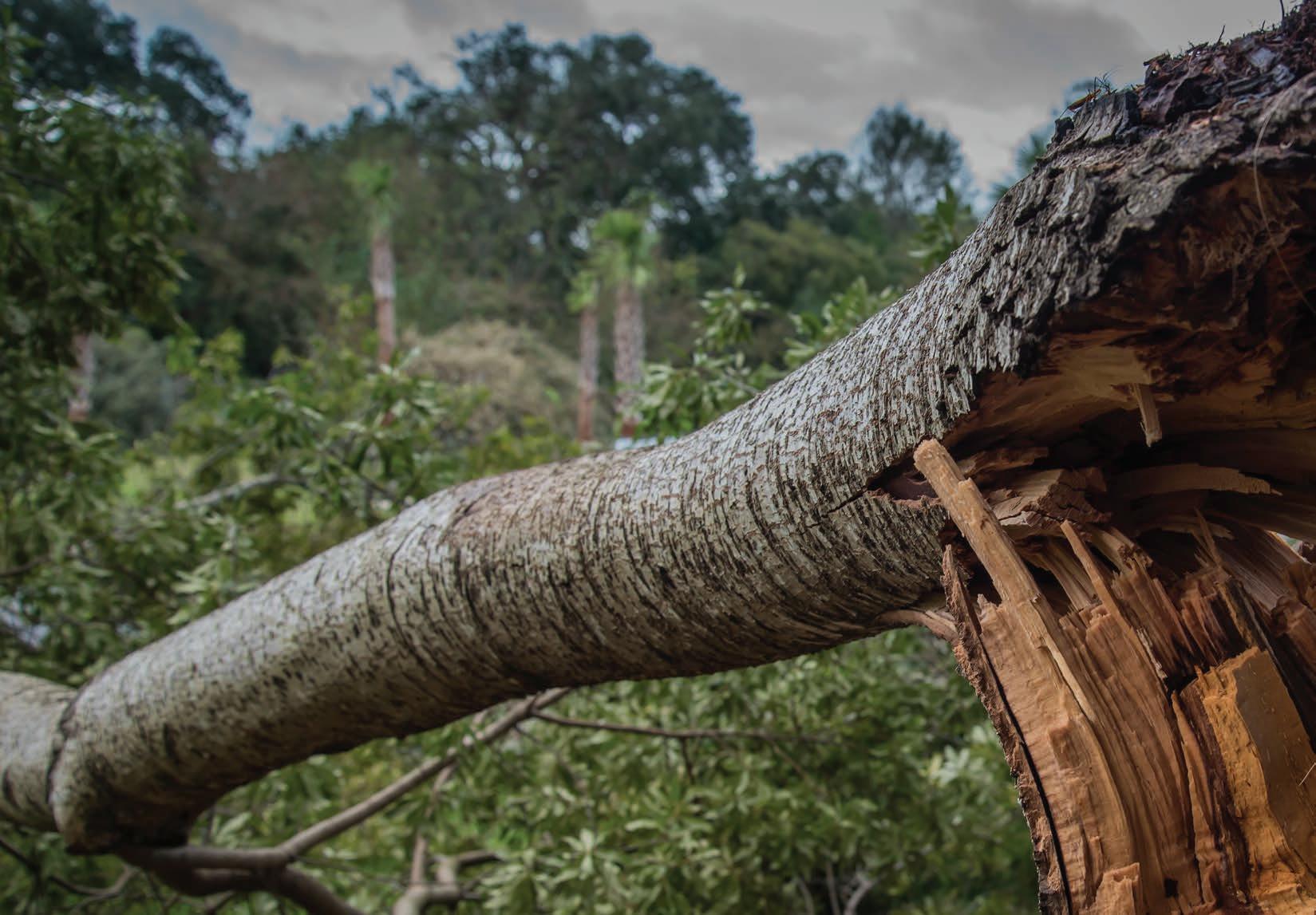
B.J. Shirah has been in the tree service business for more than 20 years and says his crew is ready to pivot to emergency prep in the event of natural disasters. Tri-County Tree Service in Wellborn, Florida, offers tree trimming and removal, land clearing, stump grinding, recycling services and debris hauling. But when Hurricane Michael barreled into the U.S. as a Category 4 with maximum sustained wind speeds of 155 mph, Shirah’s team was put to the test. He says investing in the time to train his crew and set up processes contributed to their successful operation. Once the storm passed through, he sprang into action, ready to assist with clearing the roads of storm debris including downed trees. His crew had their go-bags ready, the supply trucks packed with fi rst aid kits, signage, water, equipment, extra fuel tanks, tires and extra hoses. His crew was prepared to work around the clock for the month it took to fi nish the job of cutting, clearing and hauling debris to get the roads operational. Shirah says he would have preferred to use his new 2019 Mack® Granite® for cleanup after the monster storm, but it had not yet been delivered. Shirah estimates the Mack would have grossed nearly $75,000 for the company. “We get paid by the load and the Granite would have increased productivity and uptime. It would have paid a good dividend during Michael,” he says. While he’s back to his regular tree removal business, he says his new Mack Granite, turned into a well-loved workhorse. “It’s our fi rst Mack truck and it’s done a beautiful job. My crew loves the automatic transmission and I love its effi ciency and power,” Shirah says.
Choose a primary person and an alternate for each key role. Identify key personnel to lead each of the teams. Consider special roles for the incident management team including media relations, incident coordinator, legal, human resources and fi nance.
Rehearse and practice
Once the plan is documented, set regular rehearsals or practices to train personnel in their roles and in the use of the document itself, Luan says. Verify the strategies — “what to do” — and the procedures — “how to do it” — work properly. Identify any gaps in the plan and revise the plan to close those gaps.
You also need to raise awareness about the plan across the entire organization. “Business continuity is everyone’s responsibility,” Luan says. While not everyone is on the crisis team, everyone has a role to play when an incident occurs. That includes participating in drills (fi re, active shooter) or knowing how to access emergency information during a snowstorm.
The goal of the rehearsals or practices is “to embed the principles into the fabric of what you are doing day to day,” Luan says. “Build these good practices into your regular processes so it is like brushing your teeth. It becomes a habit and you just do it without thinking about it.”
In addition, the plan needs to be reviewed at least annually. “There are planned reviews and unplanned reviews,” Luan says. “The planned review is taking the plan and dusting it off before you do a test and then making changes based on what you learned during the exercise.” An unplanned review would be an actual emergency, after which you should update the plan based on what worked and what didn’t.
Also make sure to review what she calls “volatile information” like employee contact information is up to date. It’s a good practice to review it once a quarter.
Seek expert advice
If this all sounds overwhelming, you do not have to tackle planning alone. There are business continuation planning experts who can help. “You defi nitely need a ‘tour guide,’” Luan says. “Your guide can be someone from within the organization who has the expertise required, or you can hire someone from the outside who understands the roadmap.”
When evaluating an outside consultant, Sikich says to ask for details of previous projects they have completed. “You have to be cautious when you are picking a consultant to work with you.” Some may have expertise in things like IT recovery but not in other areas of disaster planning.
Ultimately your business’ ability to survive a disaster — your resilience — will depend on how well you have planned. Make sure you have thought through what will happen during incident management.
Geary Sikich, principal of Logical Management Systems
Pitfalls
Luan and Sikich offer a list of things to avoid in your business resilience planning. • Scope creep or analysis paralysis: Start small. Get something on paper, and then improve each cycle. • Filling out a template: One size does not fi t all. However, it’s not the plan document itself, but the planning process that is what’s important. • Not accounting for change: Change is the only constant. People will change. The company will change. The method must be fl exible, easy to maintain and scalable. • Failing to prepare for low probability events: This includes believing certain types of events can’t happen to your business or denying that risks exist. No business is risk free. • Not funding the plan properly: You need to make sure you have working capital to get you through the days immediately following the disaster, before insurance funds are released.
Know Your TCO
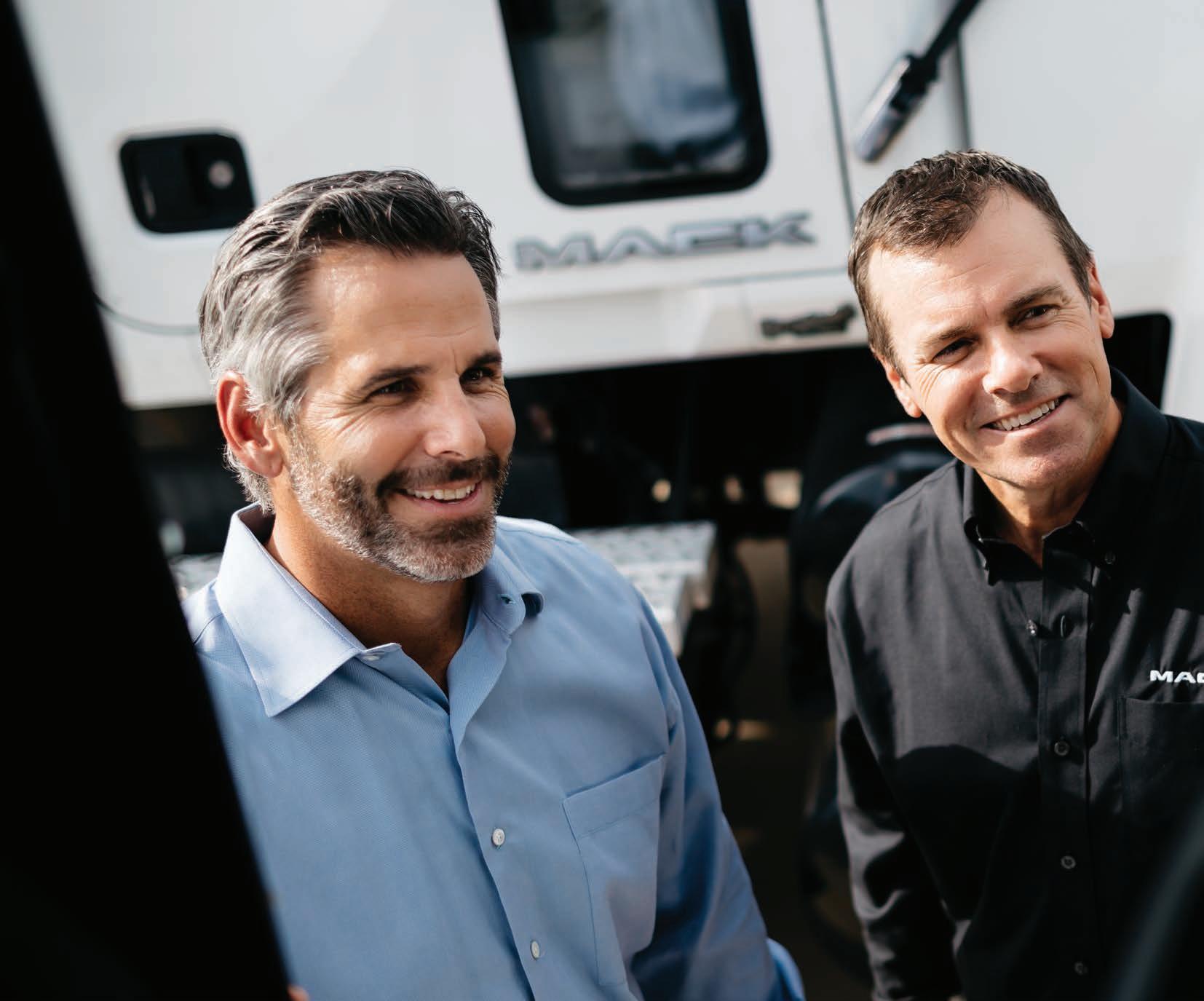
It pays to understand the total costs of truck ownership. By Olivia McMurrey
Fleet managers and owneroperators alike know the importance of total cost of ownership. To a large extent, TCO determines a company’s profitability. Some firms diligently track the total costs they pay to operate each truck in their fleet. They know specific numbers for different brands and models and can cite goals when purchasing new vehicles. But for many, monitoring all the variables — especially soft costs that are difficult to quantify — is a daunting task. They’re likely aware of purchase prices, residual values and fuel economy, yet have only a vague sense of numbers related to other contributors. “With any business or even at home, you have to budget,” says Stu Russoli, Highway Product Manager for Mack Trucks. “And if you know where each of your costs go, that’s a big thing. Do truck owners and fleet managers all sit down and say, ‘How many times has a truck been in for service and what are those costs?’ They should know if they are losing money through too much service on a vehicle or in other ways, but they might not calculate it all.”
Understanding the details of your TCO doesn’t have to be overwhelming. We’ll define and analyze the pieces, starting with the most significant.
Truck and body costs
This is fairly straightforward. It includes the price of the truck; the cost of any add-ons that don’t come from the factory; and, if it is a straight truck, the price of the body (dump, mixer, van body, etc.).
Residual value
This is the approximate amount you will receive when you sell or trade in the truck. Subtracting this number from the original costs will tell you the net price of the vehicle for the number of years you expect to own it. If you are financing a truck, the financing firm will calculate this value by asking you questions such as how many miles you plan to put on the truck and in what applications it will be used. Mack trucks are known for their high resale values, and this is not by chance. “Mack takes a look at the residual of our trucks, and we evaluate what components help or hurt residuals,” Russoli says.
This doesn’t mean, however, that you should spec components based solely on how they affect residual value. Mack dealers use knowledge about residual value and customers’ operations to help buyers take a nuanced approach. “A Mack MP®8 (13-liter engine) in a tractor may have a better residual value than an MP®7 (11-liter engine), but if the customer is weight sensitive or has no need for the higher horsepower, staying with the MP7 may be the best solution for that buyer,” Russoli says. “The customer needs to ask, ‘How much fuel will I save over the life of the truck?’ It may be it balances out even though the residual is a little bit lower.”
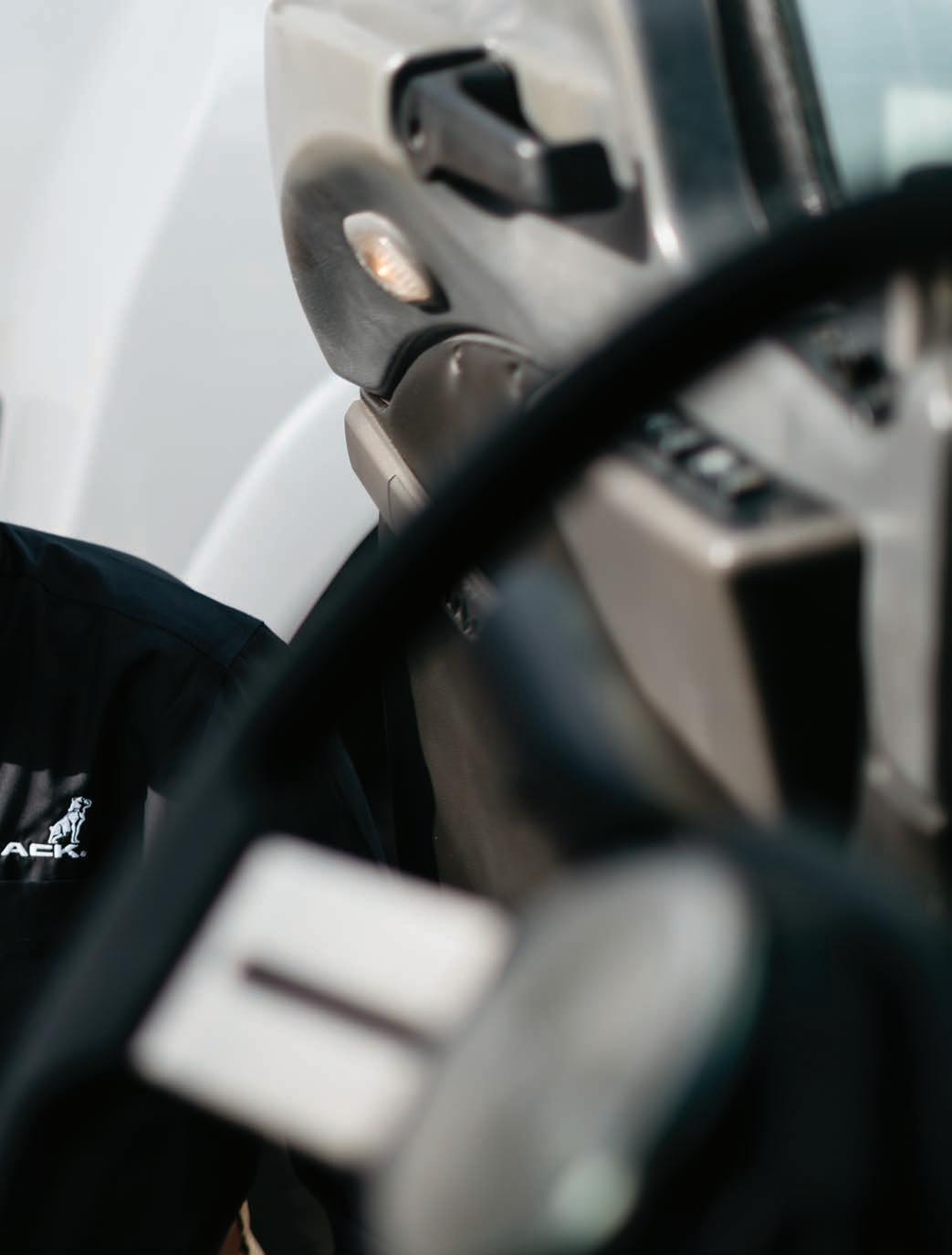
Fuel
Fuel is clearly a major expense and one that can be quantified easily. While it’s a no-brainer that, given technology changes, operating older trucks can be costly from a fuel-economy perspective, there are also significant fuel-efficiency differences among newer vehicles.
For example, the Mack Anthem® is available with the HE+ package, which delivers up to a 9.5-percent improvement in fuel economy over a non-HE+ Anthem tractor and achieves the U.S. Environmental Protection Agency’s SmartWay designation. If a company’s truck uses 20,000 gallons of fuel per year at a price of $3.25 per gallon of diesel, that’s a cost of $65,000. Improving fuel economy by 9.5 percent would mean saving 1,900 gallons of fuel or $6,175.
The HE+ package consists of a number of fuel efficiency-enhancing features, including Energy Recovery Technology and additional aerodynamic features, resulting in significant fuel savings without compromising performance.
“It gives you the full aerodynamic package — everything you can possibly put on it,” Russoli says. “So it’s super high efficiency.”
The HE+ package has been extremely popular since it was announced in March 2018, he adds.
In addition to aerodynamics and advanced technology, another key player in fuel economy is the transmission. “An automated manual transmission definitely will get you better fuel economy than a manual transmission even with the best driver. It is just more consistent on shifting and shifting at the right time even at the end of a shift when most drivers may be tiring out,” Russoli says.
The driver
The cost of the driver is not just the paycheck, but also the cost to onboard a driver into the company: orientation, training, routes and learning company rules. Those amounts are anywhere from $5,000 to $20,000, Russoli says, and can include the cost of idle
Total costs of truck ownership
Tractor and body costs
Price of the truck, add-ons and body (if applicable)
Residual value
Amount you will receive when you sell or trade in the truck
Fuel
Average price per gallon times the number of gallons you expect the truck will use
The driver
Consider not only paychecks, but onboarding costs
Regular maintenance
Cost of service done at planned intervals
Downtime
Cost of unplanned service as well as costs associated with lost productivity
Weight
Cost per pound of payload (for operations in which payloads are maxed out)
equipment and the lost profits associated with missed business. With an aim of helping companies retain drivers, Mack focused extensively on driver-centric features when developing the Anthem. The company does research at truck stops and interviews drivers and observes how they utilize their cabs. “We designed the truck to have a bold look in order to attract drivers and to make them want to drive the truck,” Russoli says. “We surveyed drivers and completely redid the ergonomics, moving controls closer to the driver. We raised the roof on our 70-inch sleeper so the driver can stand up right out of the driver’s seat, providing more space and easier access to the sleeper. We added secure storage, targeting best-in-class capacity for everything a driver needs to bring along on the trip.”
Regular maintenance
Tractor maintenance tends to be similar across OEMs because most are competitive with lube and other maintenance intervals. There are some differences with wear-related items such as brakes, tires and belts. With disc brakes, for instance: the parts may cost more, but replacing them takes less time so labor costs are lower and they have a longer change interval as well. One Mack option, the 6x2 liftable pusher axle, decreases tire and brake wear because the axle is lifted when payload diminishes. It also reduces weight and saves fuel.
Downtime
Downtime is perhaps the most challenging aspect to predict, but it can be tracked. And if you monitor your trucks’ downtime, trends will emerge that will give you valuable insight. “Mack has a reputation of being durable and reliable,” Russoli says. “We test our trucks more severely and we design for that.” How a truck manufacturer manages unplanned issues and how much technology a fleet uses to address them plays a huge role as well. Mack’s dealer network consists of more than 400 locations and continues to grow and improve with additional master technicians and Certified Uptime Dealer locations. The Mack Connect suite of uptime solutions include Mack GuardDog® Connect telematics, the Mack Uptime Center with 24/7/365 live support, Mack ASIST, a webbased management system, and Mack Over the Air, which can perform updates while the truck is on the road. GuardDog Connect detects problems instantly and calls them in to the Uptime Center and to a fleet contact using email, phone or text messages, according to the fleet’s preference. If an issue needs immediate attention, it contacts Mack’s OneCall customer center with the diagnostic code. A team of experienced technicians evaluates the code and identifies the exact issue and repairs needed. The driver is then instructed where to take the truck. Technicians can begin work immediately, since Mack OneCall and ASIST have provided the necessary information — including parts needed, service instructions and diagnostic information. Likewise, if a repair can wait until the next service interval or until the truck has a break, Mack Connect will communicate that as well. “Let’s say you lose a half a day or a day every time a truck has to go in for service,” Russoli says. “If you know that ahead of time and can prevent that from happening, you don’t lose the work you could have done that day. That’s really critical, especially in this day and age.”

Organizing and interpreting the data
Asimple spreadsheet is an ideal tool for tracking total cost of truck ownership. Create a column for each type of application your company undertakes — dry van, reefer, flatbed, bulk haul, etc. Use the rows to track various TCO factors. If your company operates trucks in multiple applications, expect differing results in each column and spec trucks to optimize TCO for each operation. For example, spec’ing a dry-van tractor might be geared more toward aerodynamics and fuel economy, while spec’ing for a reefer application would focus on those two things, but might also involve choosing lighter weight components. A flatbed application would prompt fewer aerodynamic concerns and might call for more durable components or added ground clearance.
Weight
Fleets and owner-operators who gross out their payloads might want to add the cost per pound of payload to their TCO calculations. If you know how much you can gain or lose per year with a lighter or heavier truck, you can make an educated judgment about whether to spend extra money on lighter weight components. Even if they are running similar trucks in comparable applications, total cost of ownership can be very different from one company to the next. That’s why developing your own data sets is so important. While there is a lot to take into account, calculating the costs is not that complicated, especially if trucks can be dedicated to a specific application. And the potential payback — dramatically improved profits — definitely makes the exercise worthwhile.



